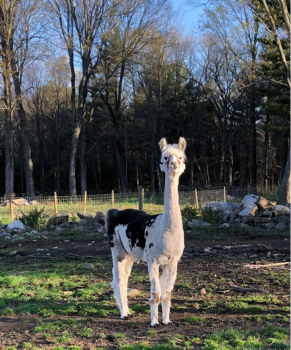
When the worst pandemic of the century struck, a group of nine Seattle Children’s Research Institute’s scientists teamed up with researchers from Rockefeller University to innovate powerful tools for diagnosing and treating a virus that has claimed over 5 million lives.
In a recent study published in E-life, scientists from Seattle Children’s Aitchison, Sather, Myler and Debley labs, in collaboration with Rockefeller University’s Chait, Rout and Bieniasz labs, demonstrate how a unique group of antibodies, known as nanobodies, could become an exceptional resource for superior COVID-19 protective and therapeutic interventions, as well as bring hope for effective treatment of diseases most commonly found in low-resource countries.
Antibodies are produced by our bodies as a protective response to bacteria, viruses and foreign substances in our blood. Nanobodies are fragments of antibodies produced by llamas and other members of the camelid family. Nanobodies are ten times smaller than human antibodies, they are remarkably robust and they are readily “humanized” for use in diagnostic and therapeutic treatments. Nanobodies bind to viral-producing antigens in places not accessible to human antibodies and are considerably more thermo-resistant.
According to Dr. John Aitchison, professor and co-director of Seattle Children’s Center for Global Infectious Disease Research, “you could put nanobodies in the trunk of a car in the summer and they could withstand heat of up to 60 degrees Centigrade before beginning to break down.” When compared to current COVID-19 vaccines that require careful temperature monitoring, the significance of nanobody therapies becomes immediately apparent.
Since they were recognized in the 1990s, camelid antibodies have been studied by various research groups for developing treatments for a range of diseases, from the flu to cancer, with the first of such drugs, caplacizumab, approved last year for treating a rare, blood-clotting disorder.
“For reasons that we don’t really understand, these animals make this variant of antibody that just has fantastic properties,” says Dr. Michael Rout, a structural biologist at Rockefeller University. “It contains the good disease-recognizing parts of a human antibody, packed into a condensed warhead.”
The Aitchison, Myler and Sather labs are part of the Center for Global Infectious Disease Research at Seattle Children’s, which makes transformative scientific advances that lead to the prevention, treatment and cures of infectious diseases impacting children and families around the world.
Researchers from these labs combined their expertise in infectious diseases, systems biology, bioinformatics and immunology with Rockefeller University’s Chait and Rout labs’ ability to generate strong-binding nanobodies quickly. Leveraging the Sather Lab’s expertise and approaches they used with human antibodies, the collaborative team was able to rapidly produce 116 combinations of nanobodies and determine where these unique antibodies bind to the virus.
Then they partnered with Dr. Jason Debley’s lab at Seattle Children’s Center for Immunity and Immunotherapies. The Debley Lab has built an ex-vivo model of human lungs which simulates the pulmonary organ’s unique air and liquid environment. This model allowed the collaborative team of scientists to test the ability of their nanobodies to neutralize COVID-19 in an environment that mimics that of infected human lung cells.
The multidisciplinary team’s results were revolutionary: They succeeded in generating nanobodies that neutralize SARS-CoV-2 variants. They also successfully generated nanobodies that neutralize SARS-CoV-1, the virus whose outbreak caused a global scare in 2002-04. The team’s perfected approach demonstrates the nanobodies’ tremendous potential as an effective treatment against COVID-19 and emerging variants of concern, as well as its ability to be rapidly deployed against new, emerging threats around the globe.
“Based on where our nanobodies bind, we anticipate that many should remain effective even against the new Omicron variant,” says Dr. Brian Chait. “This is something that we are naturally testing as we speak.”
A major advantage of nanobodies is their potential for direct delivery by nebulization deep into the lungs. This route can provide a high local concentration in the airways and lungs to ensure rapid onset of therapeutic effects, while limiting the potential for unwanted systemic effects. Moreover, with respect to deployment, nanobodies are relatively inexpensive and easy to reproducibly manufacture, with long shelf-lives and great stability compared to other biologicals, including monoclonals. Taken together, nanobodies have great potential for the development of superior and differentiated therapeutics that would not only serve critically ill hospitalized patients, but also are especially well suited to the developing countries, most of which lack a reliable supply chain, or to stockpiling.
“We need to get our nanobody research into animal models and human trials,” says Aitchison. “We have a responsibility, both morally and ethically, to society at large to make this research actionable and available to communities around the world.”
This project has been funded in whole or in part with federal funds from the National Institute of Allergy and Infectious Diseases, National Institutes of Health, Department of Health and Human Services, under Contract No. HHSN272201700059C.
The ongoing fight against COVID-19 and its variants is going to take collaborative and synergistic thinking not only from scientists, but from funding sources who understand its global potential. The team is seeking resources to advance the nanobodies research for use in humans. Interest can be expressed in email to: cgidradmin@seattlechildren’s.com.

